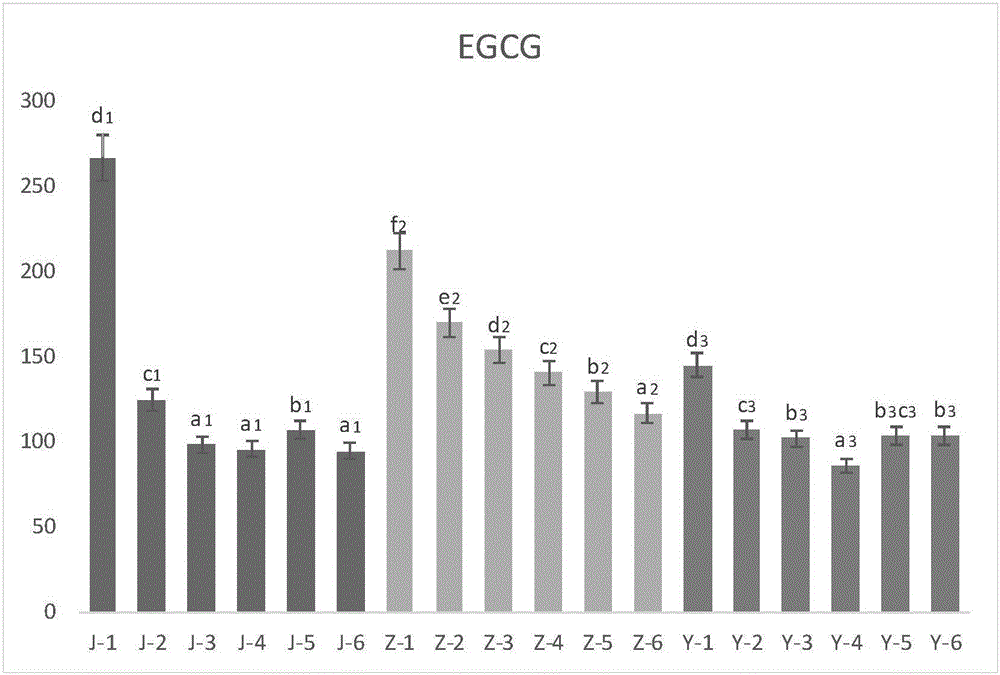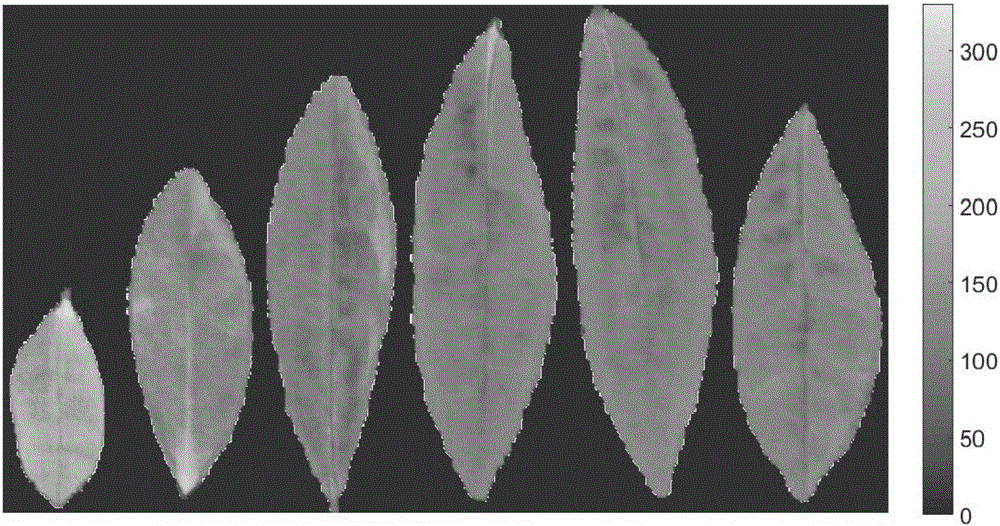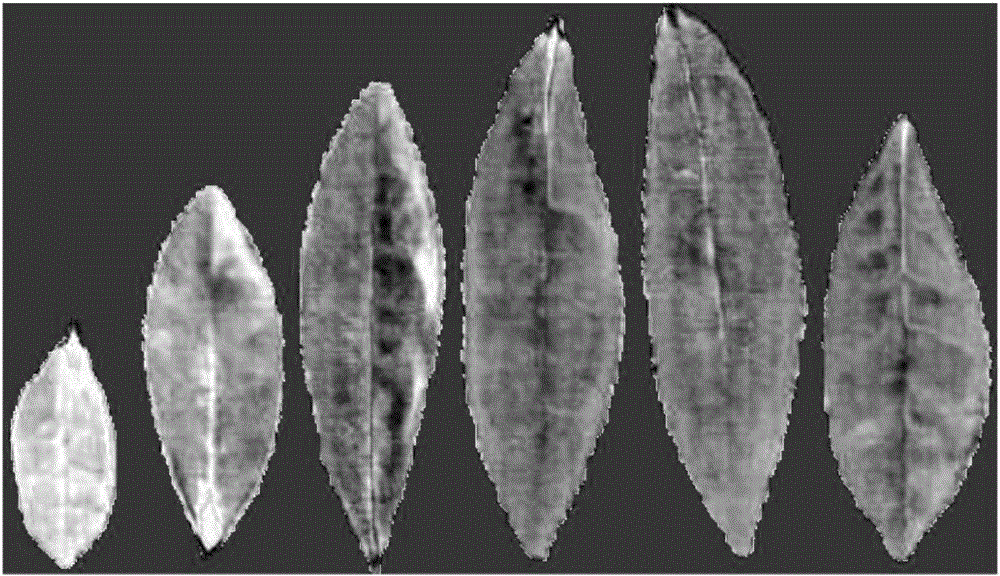Method for identifying young leaves of tea plants based on EGCG (Epigallocatechin Gallate) concentration difference
An identification method and a technology for fresh tea leaves, which are applied in the directions of instruments, measuring devices, scientific instruments, etc., can solve the problems of no system and can not be well applied to the production environment, achieve high accuracy, shield background interference, and improve adaptability Effect
- Summary
- Abstract
- Description
- Claims
- Application Information
AI Technical Summary
Problems solved by technology
Method used
Image
Examples
Embodiment
[0036] Firstly, 30 fresh leaves of 6 leaf positions of 3 varieties of tea trees, namely Juhuachun, Zhenong 25 and Yingshuang, were collected, totaling 3*6*30=540 pieces, and these tea leaves were divided into 54 samples according to the types of tea trees and leaf positions. That is, 10 fresh leaves per sample were scanned with a hyperspectral imager (ImSpector V10E, Spectral Imaging Ltd., Oulu, Finland) to scan the hyperspectral images of the leaves. After scanning, the fresh leaves were freeze-dried for 24 hours and ground into powder , using a high performance liquid chromatograph (Shimadzu LC-20, Japan) to measure the EGCG concentration of each sample, and the statistical results of the EGCG concentration values of the leaves are shown in Table 1.
[0037] Table 1 EGCG statistical results (J means Chrysanthemum Spring, Z means Zhenong 25, Y means Yingshuang)
[0038]
[0039] The significant difference of EGCG concentration in different leaf positions of different var...
PUM
 Login to View More
Login to View More Abstract
Description
Claims
Application Information
 Login to View More
Login to View More - R&D
- Intellectual Property
- Life Sciences
- Materials
- Tech Scout
- Unparalleled Data Quality
- Higher Quality Content
- 60% Fewer Hallucinations
Browse by: Latest US Patents, China's latest patents, Technical Efficacy Thesaurus, Application Domain, Technology Topic, Popular Technical Reports.
© 2025 PatSnap. All rights reserved.Legal|Privacy policy|Modern Slavery Act Transparency Statement|Sitemap|About US| Contact US: help@patsnap.com



